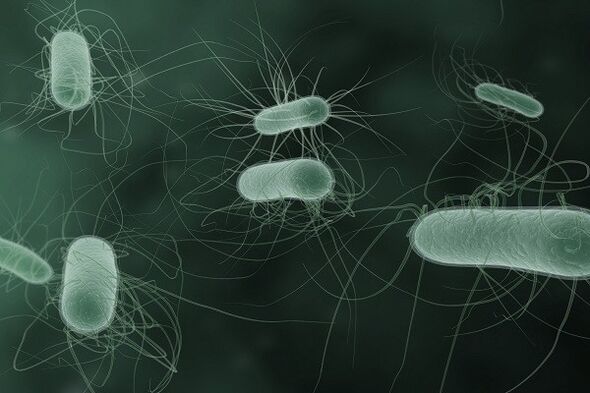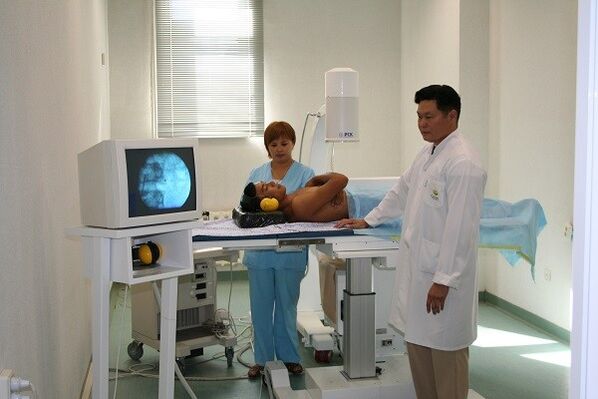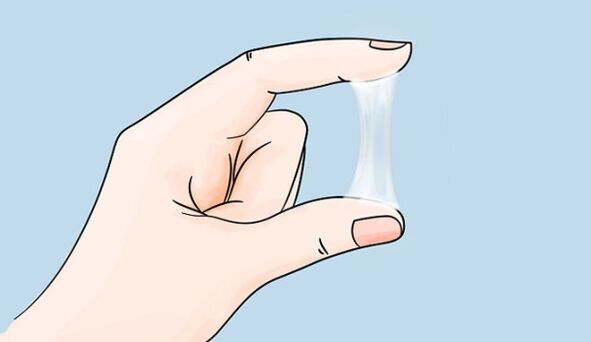In men, the secretion is mucous fluid, which is formed in the foreskin from the urethra. Often such a physiological phenomenon becomes the cause of serious experience, but not all secretions are related to the inflammatory process in the body. Some of them appear as a result of natural processes, indicating a normal state of health.
Physiological
Natural causes of urethral discharge in men:
- Residues of urine. Mostly light yellow, sometimes saturated in color. Discharge without odor and cheese formations;
- The secret of the prostate gland. It smells like sperm. It is characterized by a mucous consistency of a light white hue;
- Squirt. This fluid is formed by mixing with the secretions of the glands of the sperm and urogenital system, namely:
- urethra;
- prostate;
- bulbouretral.
As a result, a viscous mucus with a grayish tinge is released;
- Smegma. It is visually determined by its rich white color, however, in some cases, the liquid contains yellow or light green impurities.
Smegma is allocated systematically. It is a type of fat that consists of bacterial and fatty residues. It is localized in the foreskin and coronal sulcus. The main function of this lubricant is to reduce friction between the foreskin and the head. The abundance of these secretions is mainly due to the age of puberty. In the future, the activity of the prostate glands will lose its intensity and will stop completely by adulthood.
It is important to understand that adherence to personal hygiene regulations is essential as smegma tends to accumulate on the surface of the head below the foreskin. If you do not wash it off in time, oxidation of the fats and breakdown of the protein part will begin. This leads to an unpleasant odor and decomposition. Visually, it looks like cottage cheese.
Perhaps the development of phimosis - a disease in which the head cannot be completely separated from the foreskin. Without timely treatment, this can lead to chronic inflammatory processes and the development of genital oncological diseases.
In addition to the above, physiological male secretions may include:
- urethrorrhea;
- prostatorrhea;
- emission.

Prostatorrhea - mucus with grayish impurities. It contains an insignificant amount of sperm. The prostate is formed from a gland. Depending on its transparency, the condition of the prostate is determined. Due to the insignificant amount, these secretions are virtually invisible. They are usually caused by muscle tension associated with urination or constipation. Elevated levels of such fluid are a symptom of prostatitis that requires immediate treatment.
Pollution is an arbitrary ejaculation that has nothing to do with intercourse. The reasons for this phenomenon are excessive testosterone content. The age of the man and the frequency of sexual intercourse are not the least important. In men, secretions can occur during periods of abstinence - this is the release. May occur during sleep. However, in the morning you will find white spots on your panties.
Pathological secretions in men
Discharge from abnormal urethra is primarily associated with:
- possible sexually transmitted diseases;
- malignant formations;
- various types of mechanical injuries (previous surgeries, other therapeutic interventions, injuries);
- inflammatory processes in the organs of the urogenital system.
The most common criteria that determine the pathological nature of secretions are:
- Modest or too abundant quantity;
- Mostly cloudy with a mixture of yellow or green;
- They typically contain lumps of mucus, pus or blood;
- Thick and sticky, or on the contrary, too liquid, watery;
- It should be pungent fermented milk or fishy;
- Excretion occurs after urination, sexual arousal, or alcohol consumption;
- Linked to a specific time of day. Can be one-time or intermittent).
It is important to understand that it is impossible to make a diagnosis on the basis of the nature of the discharge. This requires an appropriate professional examination. The nature of the fluid selected is highly dependent on the immune system and directly on the nature of the pathogen of the disease. In addition, the form of the inflammatory process (acute or chronic) plays a special role.
The unpleasant-smelling release of sexually transmitted diseases is usually divided into:
- Mucus secretion. Indicate the presence of chlamydia or urethritis (mycoplasma or ureaplasma). They are characterized by a small amount of selected fluid. They are colorless, viscous in texture. Leukocytes are detected using microscopic diagnostics (norm 4 cells);
- Mucus - purulent. These secretions also indicate chlamydia as well as ureaplasmosis and mycoplasmosis. With chlamydia, they localize in the form of a kind of adhesion to the head of the penis, with a light white tinge, a transparent secretion from the urethra in men;
- Puree. The discharge of males is greenish or yellow. These are the characteristics of gonorrhea. They have a pungent rot odor. Microscopic examination shows that the fluid contains epithelial cells selected from the urethra. In addition, there was a significant increase in leukocyte levels. Concomitant symptoms include severe cramps and burning during intercourse and urination (especially in the morning). Itching is also possible.
Non-sexual inflammatory processes
The causes of inflammation of the organs of the urogenital system in the vast majority of cases lie in their own conditionally pathogenic microflora. These are microorganisms whose activity is activated as a result of a weakening of the body's protective properties due to recent illnesses or underlying intense psychoemotional stress. These microorganisms are:
- Candida fungi;
- streptococci and staphylococci;
- Escherichia coli.

They live on mucous membranes and on the surface of the skin. Their active reproduction is hindered by the immune system. Harmful factors that lead to an uncontrolled population of harmful microorganisms include, in addition to those listed above:
- hypothermia;
- the negative effects of chemotherapy;
- radiation exposure (radiation sickness);
- taking broad-spectrum antibiotics.
Uncontrolled reproduction of the conditionally pathogenic microflora can lead to diseases such as:
- Candidiasis or thrush. Infectious disease of the urethra caused by the fungus Candida. Characteristic signs of this disease are itching and cramps during urination and ejaculation. It is visually defined by the smell of coagulated sour milk. In some cases, dull pain is possible in the lumbar region and lumbar region. Candidiasis develops primarily as a side effect of radiation, excessive antibiotics, or chemotherapy treatments. Poor hormonal levels also contribute to the development of the disease. Cases of rare sexual infections. If cottage cheese secretions appear, you should consult an andrologist;
- Non-gonorrheal urethritis. Disease affecting the bladder. It is characterized by unsatisfactory frequent urination. Urethral pain is not as intense as in genital urethritis. Mucous fluid appears after or during urination. In the early stages of the disease, purulent impurities are characterized in the form of lumps. The discharge is moderate. Without the necessary and timely treatment, the infection affects the ureter and kidneys, resulting in pronounced blood contaminants in the secretions;
- Urethralis gardnerellosis. With this disease, urinary excretion is not significant in men. They are characterized by a pungent fishy smell. The color is predominantly light yellow, but a greenish hue is also possible. In some sources, this disease is interpreted solely as sexually transmitted, but it is impossible to infect the male body with gardnerella! In fact, the causes of this disease lie primarily in banal dysbiosis, which developed during a violation of the body’s immune properties due to the factors listed earlier. It is fairly easy to handle if qualified assistance is referred in a timely manner. Therapy includes drugs to stimulate immune cells as well as copious amounts of lactic acid bacteria to correct the microflora;
- Inflammation of the prostate. Inflammation of the prostate. The early stage is characterized by abundant emissions of grayscale. In the absence of proper therapeutic intervention, the disease develops into a chronic form and is much more difficult to treat. In this case, the volume of fluid released from the urethra will be almost invisible and its color will be white. The main symptoms of prostatitis are difficulty urinating and a poor erection. Neglected cases can compromise the development of anuria (lack of urination) and impotence;
- Balanoposthitis. It is an inflammation of the foreskin accompanied by edema. Usually, this disease is characterized by abundant purulent discharge in men with mucous membranes. In addition, redness of the prepuce leaves and a painful sensation in the head of the penis can be observed.
Other
Abnormal discharge from the urethra in men is not always associated with inflammatory processes. This is often associated with disorders of the central nervous system or musculoskeletal system (trauma, constant stress, congenital or acquired diseases of the spine, etc. ). Such emptying is characterized by:
- Spermatorrhea - passive ejaculation that is not associated with sexual intercourse and not due to orgasm. The provocative factors are spinal injuries and regular stress. This physiological phenomenon is associated with violation of innervation and decreased tone of iron deferens;
- Hematorrhea. Represents patching. In most cases, the causes of the disease are mechanical damage to the urethra as a result of surgery or other therapeutic procedures (catheter placement, smear of the genital mucosa, etc. ). Hematorrhea is possible with urolithiasis accompanied by intense pain in the lumbar region and lumbar region. This is due to the discharge of stones. In this case, bleeding occurs during or immediately after urination. In addition, this phenomenon is observed with inflammation of the renal glomeruli, accompanied by edema and hypertension. In addition, there is increased protein levels in the urine.
- Prostatorrhea. Transparent secretions in men, which is the secret of the prostate, which indicates a chronic form of prostatitis, or prostate adenoma.
It is important to understand that when you first detect suspicious urethral discharge, accompanied by cuts, burns, or itching, you should see a doctor as soon as possible to avoid complications!
Diagnosis of the disease with pathological secretions from the penis
The test procedure consists of several diagnostic procedures:
- Initial examination by a specialist in the genital organs, namely the foreskin, head and perineum. The main task is to identify possible organ deformities, rashes, secretions, signs of inflammation;
- Feeling of the lymph nodes in the lumbar region and assessing their condition. These can be:
- increased or within normal limits;
- warmer or colder than nearby tissues;
- movable or not;
- hard or soft;
- whether or not the patient has a painful sensation to the touch.

In addition, the groin lymph nodes are examined for ulcers;
- Finger diagnostics of the prostate. This test is done in the rectum. In this case, fluid may be released from the urethra, which is necessary for microscopy. The adenoma is characterized by uniformly enlarged lobes of the prostate and dense cords. Irregular growth indicates the development of a malignancy. A strengthening factor is the emptying of the urethra during blood clots. For the reliability of the test, it is recommended to abstain from urination 1, 5 - 2 hours before the procedure;
- Complete blood count and extended urine test. You have to give up on an empty stomach;
- Material testing (smear for microscopic examination and culture). A procedure that minimizes the risk of misidentification of the disease. It differs in particular accuracy. The stained smear reveals all the contents under a microscope:
- bloody bodies;
- presence of epithelium;
- fatty ingredients;
- non-venereal pathogens belonging to a conditionally pathogenic microflora.
- Ultrasound and computed tomography of the urogenital system. It is usually used to confirm or refute an existing diagnosis.

A final diagnosis is only possible if the histological examination is ready.
Prevention
There are a number of preventive proposals. First, you need to pay attention to your personal intimate hygiene. Neglect can lead to many dangerous diseases. It is necessary to wash the penis trunk daily with soap, removing the accumulated smegma from the surface. The procedure should be performed twice a day (morning and evening). Contraception should be used during sexual intercourse with an unknown partner to avoid transmission of sexually transmitted diseases. In addition, you should undergo a comprehensive medical examination at least once a year to help identify and eliminate potential health problems in a timely manner.
Discharge from the genitals of men and women is normal, but can sometimes speak of disease. It is often the case that abnormal secretions are a messenger of sexually transmitted infections.
In men, when excited, discharge is a natural physiological reaction of the body
Smegma is a physiological secretion from the glands in the head of the penis. Their number is small. These are removed hygienically and do not cause discomfort. In the absence of hygiene or non-compliance with the rules, smegma accumulates under the foreskin and can lead to inflammatory diseases such as balanoposthitis.
Sperm are excreted during ejaculation and contain sexual secrets and sperm.
Ejaculation is involuntary ejaculation, usually during sleep, that occurs during puberty or in men who stay for long periods of time.
If a man notices that the amount and nature of these secretions have changed, he should see a doctor. Pathological secretions in men can be cloudy, gray, yellow, thick, cheesy. Their appearance is accompanied by a burning sensation, pain, and discomfort in the urethra.
Normal indicators of male discharge
During arousal, the amount of secretion in men is individual. If someone is watching their health, they know their norm.

Physiologically, the amount of secretion increases with longer abstinence from intimacy. In this case, they will be thicker and more turbid. Emission rates:
- watery and transparent;
- the odor is not expressed;
- medium density.
Food, stress, chronic diseases, bad habits can affect the change in secretions.
Intimate hygiene rules for men:
- Use neutral acid soap.
- Wash the genitals 2 times a day.
- Rinse the glans by retracting the foreskin.
- Avoid overheating the testicles.
- The bedding should be wide and made of natural fabric.
Female discharge
During arousal in women, discharge is commonly referred to as lubrication. It looks like a clear, odorless liquid. The fluid is secreted by the epithelial glands of the vagina. And it also includes leukocyte cells and microorganisms that are representative of the normal microflora of the vagina.
Vaginal secretion is also normally excreted at a rate of 5 ml per day. In an aroused state, the volume increases due to the blood supply to the gonads. Depending on the physiological characteristics of the body, some girls have more, others less.

Discharge during arousal is a completely normal physiological phenomenon in women.
Thanks to the lubrication, the penis penetrates comfortably into the vagina. During ovulation, the composition of vaginal secretions changes to ensure conception.
Normal indicators of vaginal discharge
Female discharge rate:
- liquid, transparent;
- gel-like during ovulation;
- a small amount that increases closer to ovulation and then decreases;
- faint odor, without unpleasant hue;
- do not irritate the vaginal mucosa or the skin of the external genitalia;
- not accompanied by subjective feelings.
During intercourse, the amount of mucous secretion from the vagina increases - a sign of excitement.
Hygiene rules for normalization of vaginal secretions:
- For special intimate hygiene, use special soap. The formulation must contain lactic acid to maintain the acid-base environment of the vagina.
- In the case of large-volume emptying, daily sanitary napkins are used, which are changed regularly.
- Wear a canvas made of natural fabric.
- We recommend washing yourself twice a day.
Exiting the human body means a lot. Usually, their presence indicates a healthy condition or the development of any pathology, disease, or infectious process. In some cases, the secretions themselves may be absent, for example, in the case of runny nose, it is obvious that the person is ill. Similarly with secretions from the ear.
In the case of the reproductive system, everything is somewhat more complicated, from the genitals to their natural openings, with fluid leaking, which in some cases will be the norm, but in other cases it will serve as one of the symptoms of the disease. And sometimes discharge from the penis is the only symptom of developing a serious illness.
Physiological secretions in arousal
Libidous urethrorrhea is a secret secreted by the gonads. He appears excitedly in every man. The amount of secretion is small, it can be formed during intercourse. In some cases, the secret appears in large amounts.
Norm or deviation?
How do you determine if a normal amount of secretion is released during excitement? Every man’s physiology can be different and there are no norms for the amount of secret. However, if a person notices that the volume of the fluid has increased, changed in texture, smell, and color for no reason, this indicates the presence of infection, inflammation, genital problems, and so on.
There may be exceptions to this. So if a man has not had intercourse for a long time, the volume of the secret increases. It may be slightly thicker, more turbid, but there may be yellow tint, blood streaks and other changes. The maximum is a little confusion.
A normal secret must have the following characteristics:
- absence of unpleasant odor;
- transparent color;
- the medium density texture.
Factors influencing the characteristics of the secret:
- diseases;
- eating habits (consumed products);
- abstinence from sexual activity;
- stress and improper lifestyle, weakened immune system.
In some cases, choosing a secret out of excitement triggers the act of defecation. Physiologically, this process is normal, although its development should be rare.
It is important to note that the secret excited from the urethra of the penis contains sperm. Due to their poor quality or inflammation of the prostate, the color of the sperm changes. In this case, if you are excited, the fluid should not be released in the usual way.
Discharge during inflammation
If a man does not have a sexually transmitted disease, we are talking about an inflammatory process, more specifically its possible presence in the body.
Pathogens may include:
- streptococcus;
- candida;
- colibacillus;
- staphylococcus aureus.
Inflammatory process in the urethra - a channel that allows fluids to pass through. In this case, the nature of the selection may be as follows:
- presence of mucus;
- presence of pus;
- stickiness;
- turbidity.
Treatment

Treatment can be prescribed by your doctor.
Depending on the disease developed, appropriate medications are prescribed. These are usually antibiotics, which are also different.
Some antibiotics fight sexually transmitted infections, others aim to suppress the pathogenic environment - candida and other fungal microorganisms.
In addition, anti-inflammatory agents, vitamin complexes, concomitant medications, and dietary supplements are prescribed to treat diseases, depending on health status and concomitant illnesses.
Conclusion
Discharge from the penis, more specifically from the urethra, when excited, can have certain consequences if ignored.
What you need to know about excitement:
- The normal condition of the fluid selected from the penis is clear, white, with no unpleasant odor, no pus, no blood.
- Disorders of secretion may be indicative of the development of inflammatory processes associated with sexually transmitted infections and sexually transmitted diseases.
- The characteristics of the symptoms may depend on the duration of the disease, its characteristics and the immunity of the man.
In some cases, a change in secretions is normal if there are objective reasons for it - a change in diet, concomitant illnesses, abstinence from sexual activity.



























































